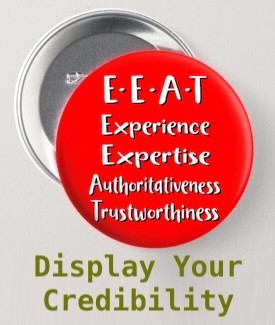


Expressive writing is the type of content where the author discusses personal thoughts about the subject. It requires writing with clear points and expressing oneself well.
A well-written online style is necessary to be successful. That helps attract readers and improve ranking among search engines, which brings additional traffic.
Other writers have asked me to help them improve their content on HubPages, where I've been publishing articles since 2009. So I'll cover a few aspects to consider when publishing online.
Give a general outline at the beginning. It will help set the stage and help the reader understand your discussion. That makes it easier to follow the logic.
But don't contradict yourself. I occasionally see articles where the author starts with a few paragraphs that do not relate to the title. To get people to read past the beginning, you must immediately focus on the subject mentioned in the title.
In addition, your titles and summary need to be consistent. Both need to apply to the subject that follows in the article.
The main image should represent the story well. It will help if the image gives the reader some clue about the subject. That will also attract the reader to look further into the content.
Images used for attraction may cause readers to leave as soon as they notice the subject does not relate to what they thought it would, based on the image. So be careful when selecting images for an article.
Your traffic comes from Google when it provides helpful content people search for online. That includes anything that gives answers to questions people put into Google.
That means you should consider SEO (Search Engine Optimization) when writing.
You need a title that represents what people are searching for. So think about how people might enter their search query in Google.
It's different when writing a magazine article, where catchy titles work well. That is because you want people to notice it and feel inclined to check it out. However, that usually doesn't work for Google search listings.
That only works for magazine articles or posts where you have readers following you. But when writing to answer questions from organic search, you need to relate more to the query.
Of course, trying to combine both methods never hurts if you can. In that case, an eye-catching title will appear in the SERPs, which might make your article stand out among the other results of the query.
To increase your Google traffic, SEO needs to be considered. So I'll give you four more things to focus on:
When proofreading an article, I try to find out if I used the same word too often. That's overkill, and Google might consider it keyword stuffing and lower the article's ranking.
When I find I've overused certain words, I figure out if I can remove the entire passage. If it's definitely needed, I try to use synonyms for the words used too often.
When proofreading after you finish the first draft, think about the meaning of all your subtitles. Give some thought to how they are interpreted. Do they fit the content well?
Also, consider the logic flow. For example, you might determine that some paragraphs or sections would do better if moved earlier or later in the content.
You might also discover that one of your subtitles works better than the article's main title. I've done that many times.
When I start writing an article, I give it a title. Then, as I progress through the creative process, I give each section a meaningful subtitle.
After all is said and done, while I proofread, I might find that something I used as a subtitle would make a perfect main title.
So don't hesitate to do that too. You want your finished product to be the best it can be before you publish it.

Read your article back to yourself out loud. Think like a reader who knows nothing about what's in your head. That's how you can find problem areas that need to be improved. For example, the logic flow may be off. The meaning might be lost. It's worth putting effort into the following:
When you write, you must always consider if you're saying things the reader may not understand or needs clarification. For example, if you use terms that are not generally known, explain them, or leave them out.
I often drop sections from my original draft that I realize don't help or might even be confusing.
Work at finding your mistakes — we all make them. It's just a matter of catching them before you publish.
